Full analysis of decentralized storage track core projects: Filecoin, Storj and Arweave
Written by: 小毛 哥 @ 链 闻 、 咖啡 @ 头等 仓
Source: Chain News
2020 is a crucial year in the field of decentralized storage. Within the next two months, there will be product development progress for heavy-duty decentralized storage projects including Filecoin and Storj. The track and its core projects in the field deserve attention.
The business model of using storage as a service has a long history. In 2006 , Amazon launched Amazon Web Services (AWS) , which leased its own servers and storage space to users, reducing the overhead for developers to create and manage server infrastructure.
- 2019 Global Blockchain Investment and Financing Report: The number of global blockchain field financings is 543, with a financing amount of 23.83 billion yuan
- Fidelity leads investment, blockchain settlement company Clear secures $ 13 million in Series A financing
- Intercontinental Exchange ICE acquires software service provider Bridge2, ready to launch applications for Bakkt
Decentralized Storage Network (DSN) is a storage business model that stores files or file sets in shards on the storage space provided by the supplier through distributed storage technology.
From the application perspective, we divide the centralized storage projects into two categories:
- The first is a currency project that uses hard disk space as a proof of computing power for mining and benchmarking bitcoin. This type of project is mainly represented by the PoC (Proof of Capacity) consensus project including Burst and BHD ;
- The second is to use the effective storage as mining power to earn rent. In fact, it is an application project mainly providing storage services, such as Filecoin , Storj , Sia and other projects.
Why pay attention to the field of decentralized storage?
Storj, a decentralized storage network based on Ethereum, announced that it will release a formal version in the first quarter of this year, and announced a series of new features that can be expected. The highly anticipated mega project Filecoin has been postponed many times before, and has now completed the first stage of the testnet . The second stage of the testnet is about to start. The mainnet is planned to be launched from March 23 to April 24.
First of all, 2020 is a key year in the field of decentralized storage. The technology development in this field has been based on many years. Although there have been many bouncing tickets before, the technology has matured. In the first quarter of 2020, there will be Filecoin, Storj and other heavy-weight decentralized storage projects have released product developments. These accumulated accumulations of project competition are also expected to drive the entire field to become hot and combine with other blockchain applications to create more new use cases.
Secondly, the business model of decentralized storage is clear and the market size is increasing. For miners, the entire market is profitable. If large-scale commercialization can begin in 2020, and with the development of the Web 3.0 ecosystem and the emphasis on privacy and user data ownership , this year will become a year of technological breakthroughs and products in the field of decentralized storage. Let us choose Some projects worth attention, and analyze their advantages and disadvantages.
Our analysis of worthy decentralized storage projects
Filecoin 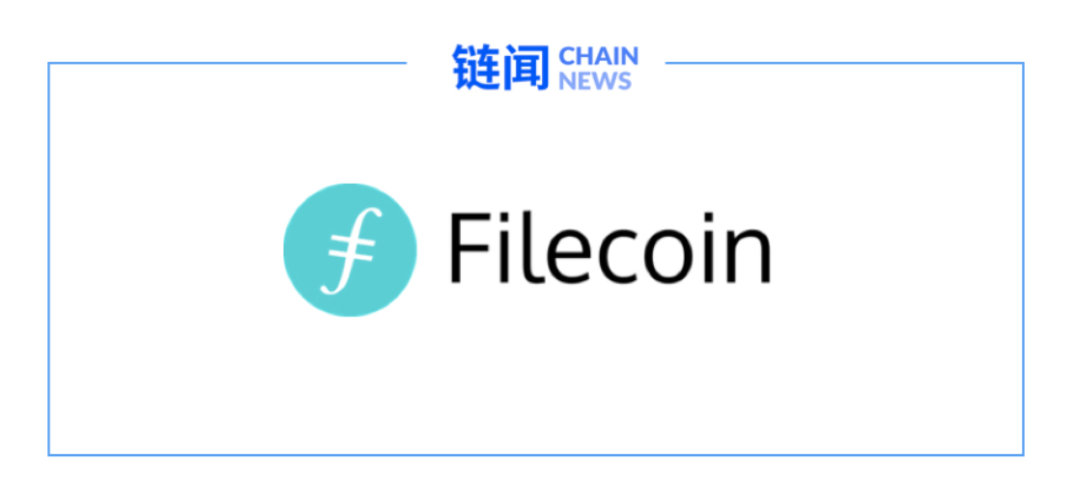
Filecoin has received more than 250 million US dollars in financing since its launch in 2017. Filecoin is likely to be the leader in 2019 and the leader in 2020. Its planned launch in the first quarter of 2020 is also the most anticipated in the blockchain world this year. One of the big things. Filecoin is expected to drive the enthusiasm of the entire decentralized storage track.
We analyze the advantages of the project:
- The project has a huge volume and abundant funds, and the current ecosystem is complete, which is conducive to expanding the scale of application
The Filecoin network is mainly composed of independent data storage miners, retrieval miners, and storage service customers who hire miners. Storage service customers can be hired through two distributed, verifiable and incentive markets, the storage market and the retrieval market. miner. Filecoin and its complementary distributed network transport protocol IPFS were developed by Protocol Labs .
As a decentralized data storage network, Filecoin is both the storage layer of IPFS and the incentive layer of the IPFS protocol. IPFS is the application layer of the entire system. The two protocols share multiple functional modules.
IPFS mainly benchmarks the HTTP protocol, which aims to complement or even replace the Internet's Hypertext Transfer Protocol (HTTP) . IPFS's vision is very ambitious. It wants to serve as a storage layer for Web 3.0 and build a new Internet architecture. Currently, more than 5 billion files have been uploaded to IPFS, and more than 100 blockchain projects use IPFS to store data and files, which has become one of the important infrastructures of decentralized networks.
- Filecoin bid matching mechanism helps reduce storage service prices
Filecoin miners participate in network governance by providing storage space, using effective storage as computing power, and competing for block packaging rights. This network has two types of miners, one is retrieval miners, and one is storage miners. Retrieval miners earn retrieval fees, while storage miners earn storage rents and rewards for block packaging. In terms of Filecoin's mechanism, the entire network pays miners' hardware costs through block rewards to provide storage services. Storage services match transactions with an auction. This auction matching mechanism is helpful to reduce the price of storage services.
We analyze the disadvantages of the project:
- Filecoin mining hardware requirements are high and cannot guarantee the participation of ordinary users
The Filecoin team previously disclosed the hardware information of users participating in its testnet. Currently, it is required to pack 32 GB sectors, requiring at least 128 GB, or even 256 GB of memory. Although this requirement does not represent the hardware standard of the final main network, as far as this hardware requirement is concerned, it is impossible to allow all personal computers to participate in mining, and the entire network is at risk of major central computer room and data center disputes.
In addition, at the current download speed of the IPFS network, to meet the requirements of enterprise-level services, its performance and speed need to be further improved.
Operation / development status
Filecoin launched the public testnet on December 11, 2019. Filecoin has announced its complete 2020 roadmap. The first phase of the testnet has been completed and the second phase of testing has not yet started. The project plans to launch the mainnet from March 23 to April 24.
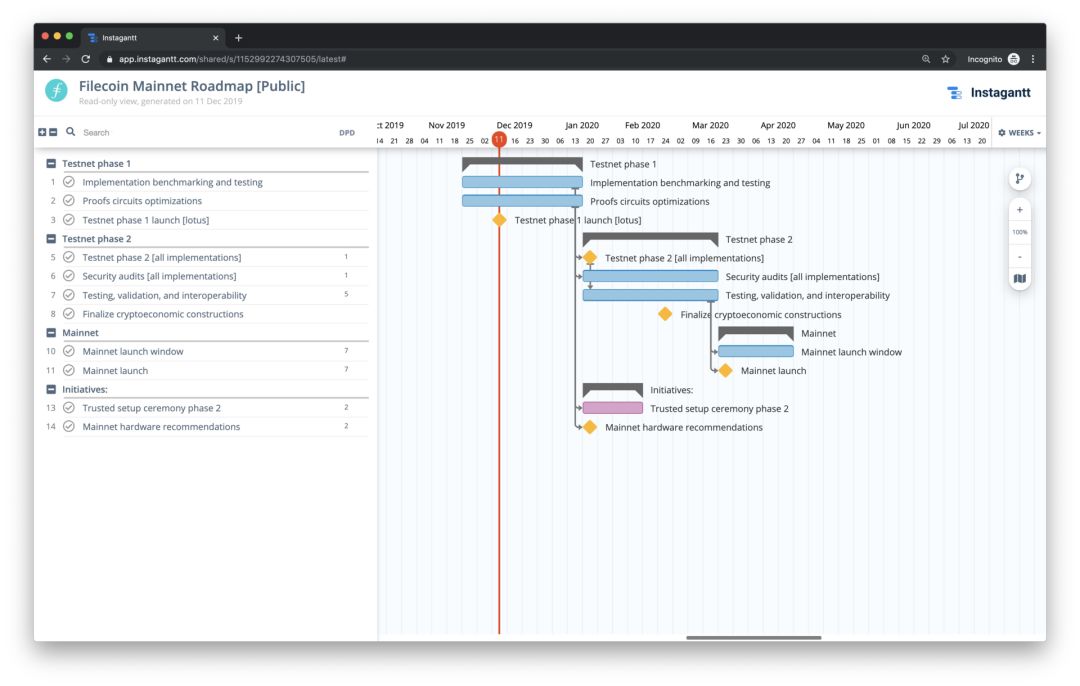
The Filecoin test network is currently running stably. According to the Filecoin test network, as of February 5, 2020, the block height is 42511, the average block time is 47 seconds, and the total network computing power is 1.2 PiB. According to the latest roadmap released by Filecoin, the first phase of the testnet will be completed on January 17, 2020. This phase will mainly perform some basic function tests, optimizations and bug fixes for Filecoin.
Previously, Filecoin planned to conduct the formal test, verification and security audit of the Filecoin network during the second phase of the test network from January 20 to March 20, 2020, and will launch trusted settings, release updates to the mainnet hardware test configuration, and release Development tool collaboration package. However, considering the Chinese Spring Festival, the project later revised the release time of the second phase of the test network, and proposed that the second phase of the test network would not be released during the Chinese Spring Festival. Filecoin said that the specific startup time for the second phase of the testnet will depend on the length of the interoperability test between go-filecoin and lotus implementation, and the specific startup time is currently to be determined.
Data source: https://stats.testnet.filecoin.io/
For more information about participating in the Filecoin testnet, you can check out this interview with the Filecoin team: " Listen to the core issues you need to know when the Filecoin team responds to the testnet ."
Storj
Founded in July 2017 , Storj is an Ethereum-based distributed cloud storage protocol developed by the for-profit company Stroj Labs . Storj aims to build a decentralized cloud storage platform that is free of inspection, monitoring, and non-stop. By using idle hard disks and bandwidth, any node on the P2P network can negotiate, transfer data, verify data integrity and availability, Retrieve data and store it.
We analyze the advantages of the project:
- Storj's model is more commercialized and more suitable for enterprise storage business
Although Storj provides storage services based on blockchain technology, the project directly targets Amazon's S3 object storage service, hoping to provide enterprises with services that are comparable to or even surpass Amazon storage's performance indicators. If the project goes well, Storj will become one of the most commercially competitive decentralized storage platforms.
Each milestone of Storj is based on quantitative indicators. Only when these indicators are met can Storj enter the next milestone. Storj's storage principle is to first split the uploaded file into 64M-sized data blocks, and then divide the 64M-sized data blocks through 2.7 times the redundancy and then cut them into 80 data blocks. These 80 data blocks are spread across 80 nodes in the network. In this way, as long as any 29 nodes of these 80 nodes are online, this file can be completely restored. Taking the file read rate indicator as an example, the official version of Storj aims to achieve a file read rate of 99.9999999%.
Storj said that more than 4,800 storage nodes are currently active on the network. After the new version of V3, the total global storage capacity has exceeded 10 PB. If Storj reaches the official version this year, the number of storage nodes will reach 5,000, and the speed of file upload and download will be flat compared to Amazon Storage. For specific indicators, please check the official blog post: https://storj.io/blog/ 2019/11 / measuring-production-readiness-using-qualification-gates /

- Storj is more suitable for ordinary users to mine and participate, and more suitable for integrating idle resources to expand the ecology
Storj users can charge storage rent by providing storage space, or rent storage space to pay rent. Most small devices, such as NAS, personal computers, and Raspberry Pi, can install Storj nodes and rent their free space. It is suitable for building a highly decentralized cloud storage network and suitable for civilian mining. Storj calls itself Uber in decentralized storage, which can reorganize social idle resources into usable commercial products.
At the same time, Storj officially launched the "Storj Labs Open Source Partner Program". If open source software vendors develop interfaces to Storj and users use Storj services through its open source software, they will receive Storj's revenue share. Currently, the official share ratio has not been announced, but this move can encourage open source software developers and thus expand Storj's application ecosystem.
We analyze the disadvantages of the project:
- Storj storage network architecture is centralized in a certain sense
At present, the salary of Storj miners is paid in the first week of each month and is manually paid by the official team. At the same time, Storj's network structure has a third-party role responsible for coordinating all storage contracts between storage users and storage nodes- Trusted Satellite . Of course, it should be noted that this "Satellite" is not a satellite flying in the sky, but a service cluster for content retrieval. Each Satellite is equivalent to the role of a retrieval miner in the IPFS network.
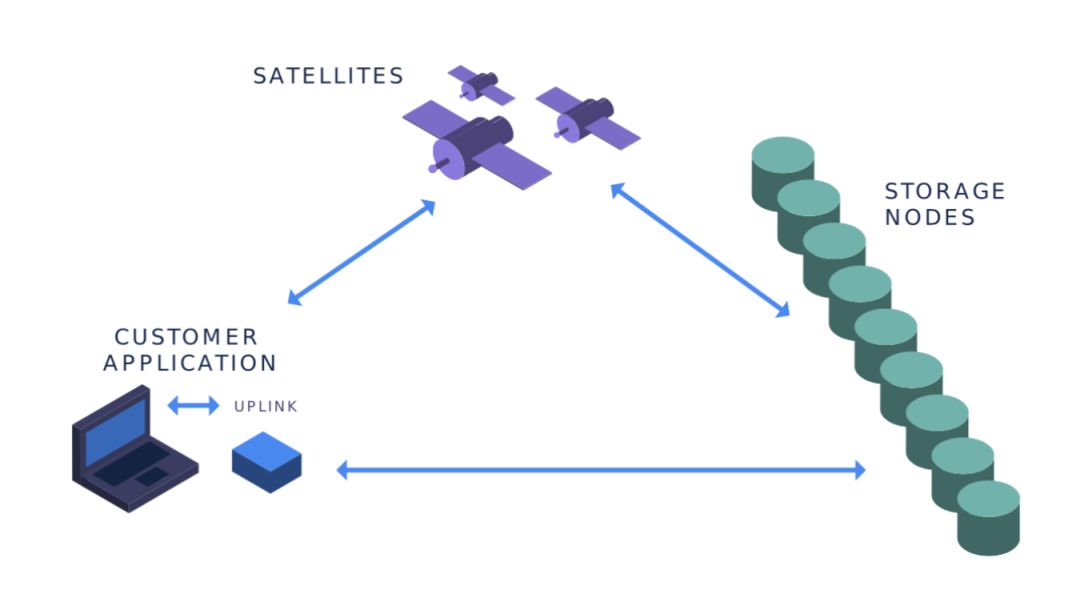
Because Storj is open source, everyone can apply to run Satellite in the future. Satellite may risk a single point of failure, which means that if a single Satellite fails, all data stored through the Satellite will be inaccessible.
At present, Storj solves this problem by splitting the Satellite into multiple services. Although the probability of occurrence is low, it still inevitably has theoretical risks. At the same time, Storj will also run a set of specific trusted Satellites called Tardigrade Network , designed to provide customers with a guaranteed service level agreement (SLA) for data availability and durability.
- Storj's token incentive mechanism may affect the token price at the beginning of the project
Storj supports users to pay for storage service bills using credit cards or Storj tokens, and will draw 40% of revenue as team salaries and expenses of open source partner programs, and the remaining 60% will be converted to Storj for distribution to miners . When the user pays with a credit card, the 60% of the funds are not purchased from the market to be distributed to miners, but are exchanged for the miners from the team's reserve tokens.
At present, the team has about 280 million Storj tokens. Only after the conversion of these 280 million tokens is completed, it is possible to buy Storj tokens directly from the market for distribution to miners, which also determines the Storj tokens. Prices may not be effectively motivated for some time.
Operation / development status
At present, Storj's product roadmap will have significant progress this year. Storj announced that it will release an official product in the first quarter of this year, and announced a series of new features that can be expected, including:
- New platforms for more storage nodes will be supported, including increased local support for nodes running on Qnap , Synology and Western Digital NAS devices , as well as support for FreeNAS and FreeBSD.
- For developers, Storj has increased the number of waiting lists. In the developer recommendation program, active developers can earn storage and bandwidth points by recommending other developers to the platform.
- Beta accounts activated from the waiting list will receive 25 GB of storage and bandwidth for free each month. Once in production, the first 10,000 developer accounts will receive 1 TB of credit, including 30 days of storage and bandwidth value.
- The upcoming new release allows NAS operators to easily add unused NAS capacity to the network and will support the backup of NAS hardware to Tardigrade storage.
Arweave
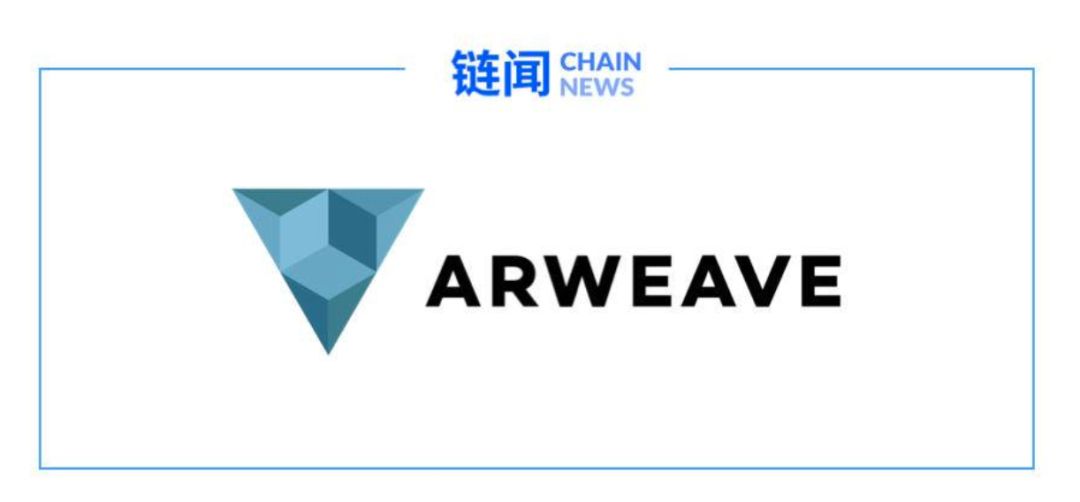
This project uses a Proof of Access (POA) to motivate miners to store history forever and share it as required. While receiving new block rewards, miners will also receive rewards for random old blocks in the storage chain. This means that the larger the total number of blocks stored by the miner, the more revenue will be obtained.
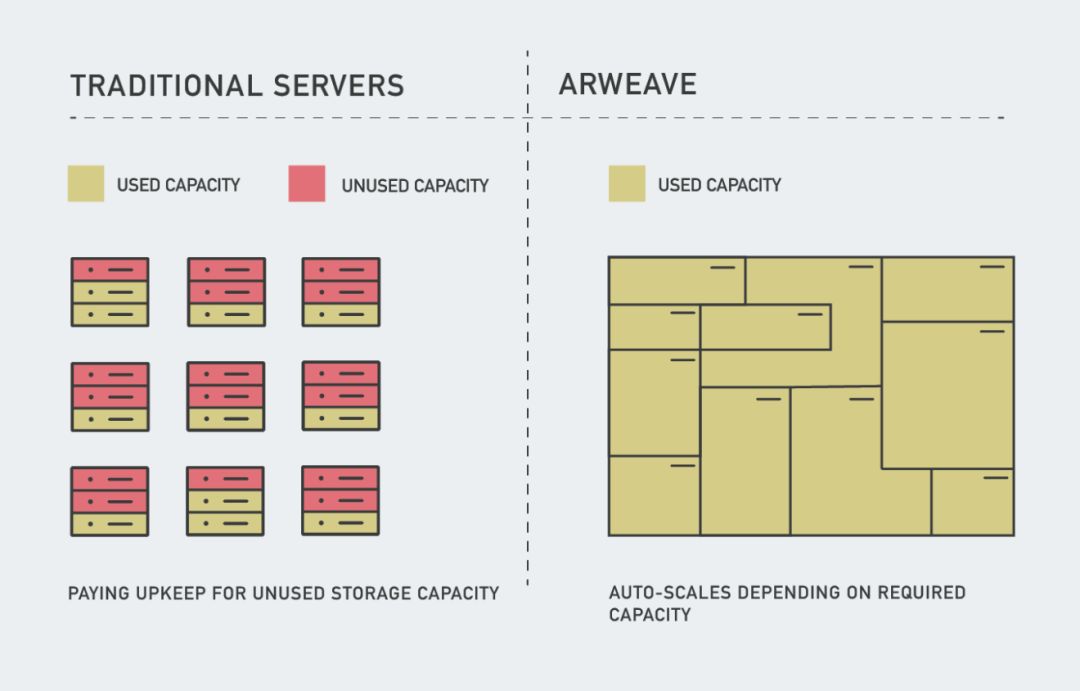
We analyze the advantages of the project:
- Arweave focuses on one-time payments and permanent file storage to fill the market gap
Unlike IPFS, which focuses on decentralized storage and Storj, which focuses on enterprise storage services, Arweave focuses on permanent storage, which fills specific market needs. Fundamentally, Arwaeve solves the problem of limited free speech, excessive censorship, and ease of use on the Internet today. The problem of tampering.
For specific applications, especially in areas with more limited network access, Internet users do not need to download a new browser. They can use the Arweave browser plug-in to permanently store digital files such as web pages, emails, and social media postings on the blockchain. And data, keep history completely and truthfully.
At the same time, Arweave can also help organizations store complete, non-tamperable knowledge and information, such as used to store climate change databases. Currently, Arweave works with the National Oceanic and Atmospheric Administration to permanently store ongoing carbon dioxide measurements to test Permaweb.
Arweave said that it will provide data storage costs similar to the decline in Moore's Law. Users only need to pay a one-time prepayment (about half a cent per megabyte) , and the interest generated by the overpayment will help subsequent storage services continue to decline. Arweave founder Sam Williams said, "In recent years, the cost of Arweave data storage has dropped by an average of 30% per year. As long as the ratio is not less than 0.5% (according to today's storage needs) , decentralized networks can still afford the cost. Payments will cover the cost of storage over the next 200 years. "
We analyze the disadvantages of the project:
- The actual application scenario is narrow, which is not convenient for developers
The Arweave feature can be applied to data preservation based on HTML5 web pages and the establishment of a decentralized H5-APP. However, in actual use, the application scenarios where we issue this certificate are narrow. At present, we can see that the most currently stored on Arweave Here are screenshots of some anti-government remarks from Twitter, and the clear increase in anti-government applications is worrying.
At the same time, the feature of Arweave is that it cannot be tampered with, which is particularly difficult in program development, because the program uploaded by the developer to Arweave must have no errors. If there is an error, even if it is a punctuation, the previously uploaded content must be invalid , Need to upload again, bound to cause a lot of useless garbage accumulation. In addition, due to the openness of the blockchain, the content uploaded by Arweave is open to the whole society and is not suitable for uploading personal content.
Although the team stated that Arweave is IPFS compatible, developers building on IPFS can seamlessly transition to Arweave. However, if developers are developing based on Arweave, they will not be able to directly upgrade their HTML5 APP. Developers must directly abandon the old version and upload the new version again, which will inevitably cause some inconvenience.
- The business model is relatively simple and may trigger a price war on homogeneous projects
Arweave mainly focuses on one-time payment and permanent file storage. This model is relatively simple. There are certain risks that will cause homogeneous projects to use the same storage concept and start a price war.
Operation / development status
The Arweave project was founded in 2017, and the current main network of Arweave was launched in June 2018 . Arweave said that there are currently more than 100 permanent applications built on Arweave, including Weavemail, a permanent email storage client that writes email content into blocks through transfers.
 Weavemail user interface
Weavemail user interface
According to the Arweave official website information, there are currently more than 300 nodes in the world, up to Germany with 223 nodes, the United States with more than 150 nodes, and China with 3 nodes. At the same time, according to Arweave's transfer data, since November 2019, the number of transfers in Arweave has increased significantly, but the number of daily transfers has been uneven. At the minimum, there are only more than 1,000 transfers per day, and around Christmas 2019 The number of transfers reached a historical peak of 2,5125.
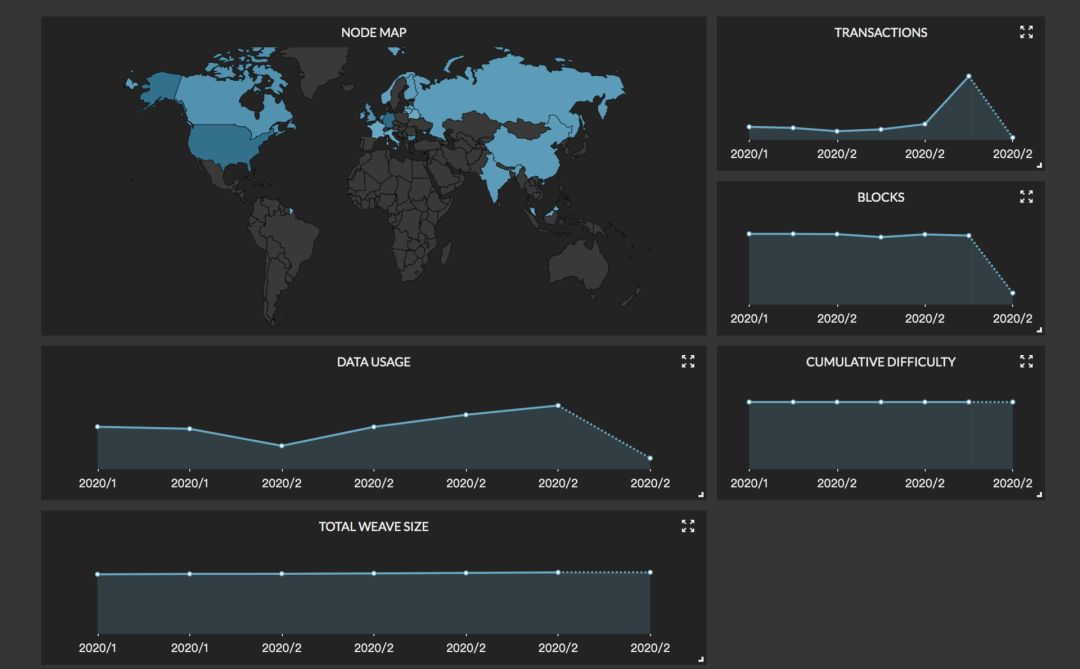
In terms of financing, Arweave previously received 1kx investment and raised $ 8.7 million through an ICO in June 2018. In November 2019, Arweave announced the completion of a $ 5 million financing led by a16z , a crypto asset investment agency, with participation from Union Square Ventures and Multicoin Capital .
Multicoin Capital managing partner Kyle Samani mentioned in the article "Web3 Stack Panorama", "No matter where the underlying data is located, the services provided by on-chain middleware including the Arweave storage protocol will serve as a single abstraction layer for developers, Such services will accelerate the development of the entire Web3 ecosystem. "
We will continue to update Blocking; if you have any questions or suggestions, please contact us!
Was this article helpful?
93 out of 132 found this helpful
Related articles
- SIM card exchange attacks stolen coins, how can Bitcoin practitioners protect themselves?
- Under the epidemic, blockchain is expected to make up for shortcomings in social online operations
- Pantera led, Square and DCG participated in the investment, and the decentralized settlement network Transparent received US $ 14 million in financing
- "The Secret History of Bitcoin": A Few Things You Did Not Know About the Bitcoin Genesis Block
- Trade-offs in blockchain projects: climb, walk, run
- Where did the supplies go? Questions that Wuhan Red Cross cannot answer, blockchain can
- 2019 DeFi industry research report: DeFi industry will become the best application scenario for blockchain landing in vertical industry





